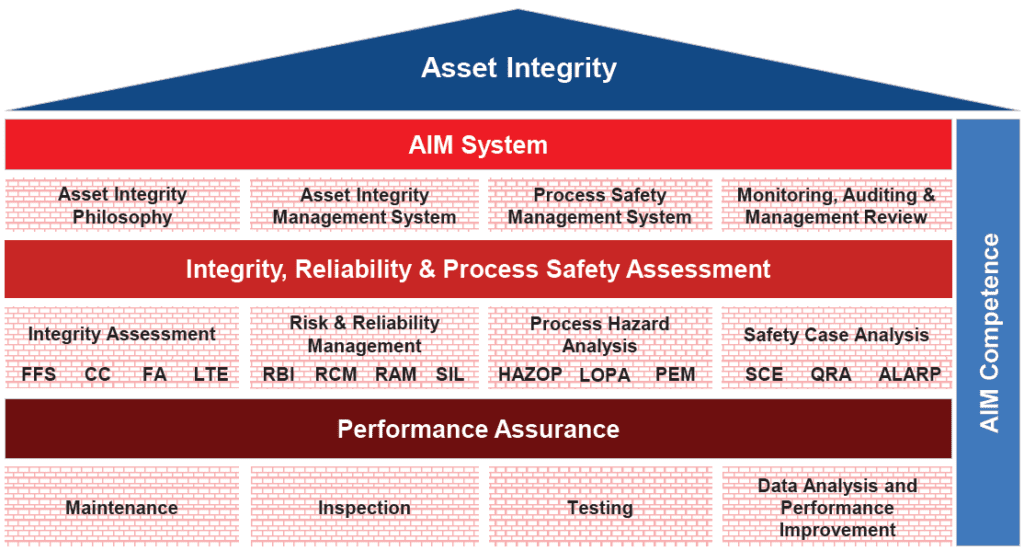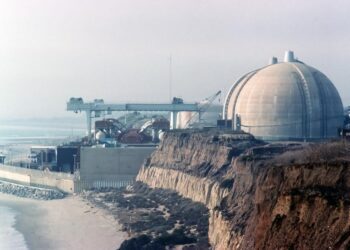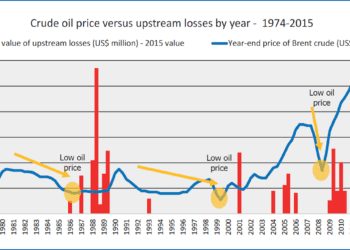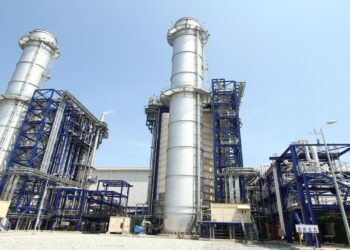The house of integrity: modern asset integrity management

Figure 1 – The aim house
Asset Integrity Management (AIM) is by no means a new concept or management initiative. It is a well-defined process that, if applied in the correct way, can offer asset owners and operators the ability to manage risk and assure the integrity of assets throughout their lifecycle.
The purpose of AIM is for an organisation to be able to say with confidence, based on the evidence, that “our assets are safe, reliable and efficient, and we know it.”
THE HOUSE OF AIM
The foundation required to build a robust approach to AIM starts with using recognised international standards. PAS 55:2008, now the ISO 55000 series of standards (Ref. 1), sets out good practice requirements for managing physical assets and ensures that consistent terminology is applied. From this foundation an AIM ‘house’ can be built – a simplified asset integrity business model to help bring together under one roof the activities and disciplines that so often suffer from a ‘silo mentality’ within an organisation.
One such house is illustrated in Figure 1 and sub-divides into three floors:
- AIM system. The top floor comprises the system of policies, standards, procedures and resources that are in place to deliver integrity over the whole lifecycle of the asset. There is a strong overlap with the process safety management system which aims to prevent major process incidents. The AIM system should be based on the Plan-Do-Check-Act (PDCA) continuous improvement process, with monitoring of performance, auditing of compliance and management review of continued effectiveness.
- Integrity, reliability and process safety assessment. The middle floor is about conducting the relevant integrity, risk, reliability, process hazard analysis and other safety case assessments to ensure that integrity risks are understood, the asset is designed and operated to achieve its performance targets, and safety risks are as low as reasonably practicable. But beware, this is also a world filled with acronyms!
- Maintenance, inspection and testing. On the ground floor, it is the maintenance, inspection and testing of structures and equipment during operations that maintain the design intent through life. Analysis of the results of these activities should be used to identify opportunities for performance improvement.
Spanning all floors is the competence of personnel in performing their tasks to the required standards.
The benefits of such a simplified model is that the different disciplines involved can each see the contribution they are making, align their processes and work to achieve a common goal. For example, some organisations have brought together their major risk and integrity management groups into one department. Another example is the use of performance standards for safety and environmentally critical equipment to provide the bridge between the claims in a safety case and the actual on-site maintenance, inspection and testing activities.
CONCLUSION
AIM is not just about squeezing as much life out of an asset as possible; it is about ensuring consistent performance of the asset, throughout its life, to deliver business objectives profitably and without major incident. In the House of AIM, these goals can be realised.
References
1. ISO 55000:2014, Asset management – Overview, principles and terminology.
This article first appeared in RISKworld issue 29







